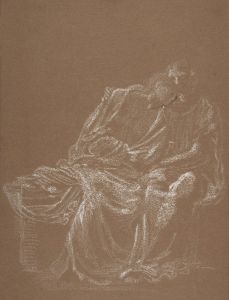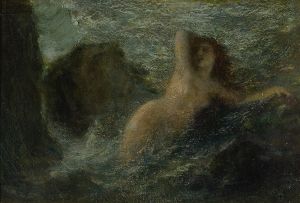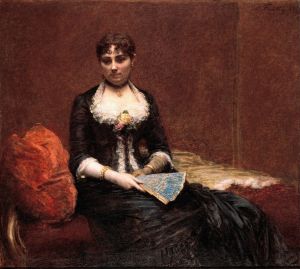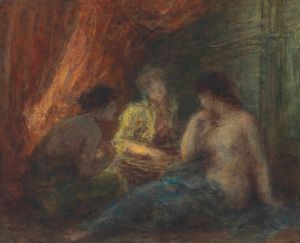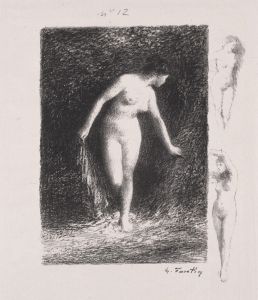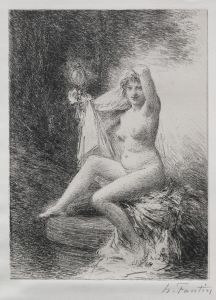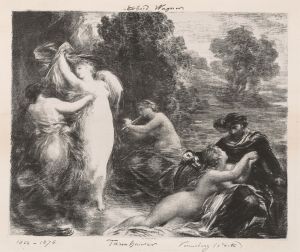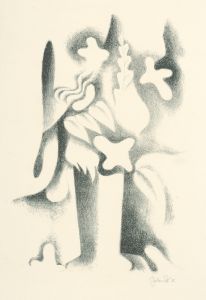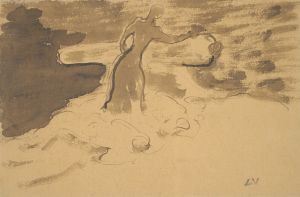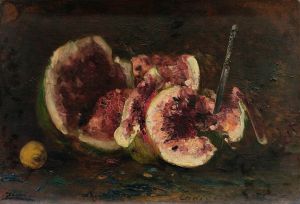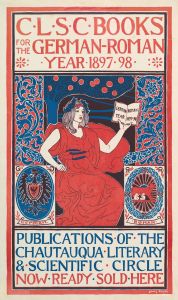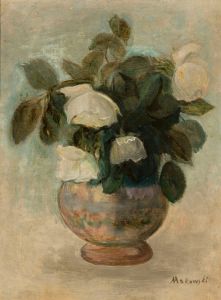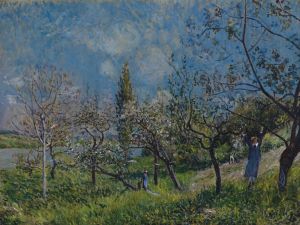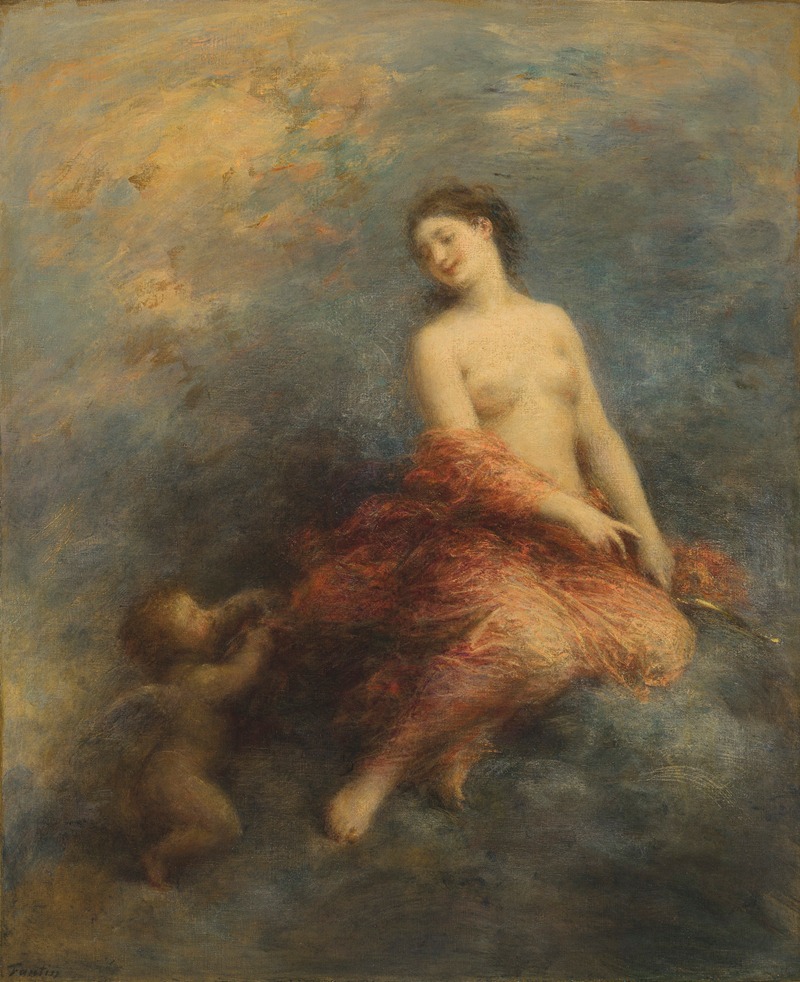
L’Aurore
A hand-painted replica of Henri Fantin-Latour’s masterpiece L’Aurore, meticulously crafted by professional artists to capture the true essence of the original. Each piece is created with museum-quality canvas and rare mineral pigments, carefully painted by experienced artists with delicate brushstrokes and rich, layered colors to perfectly recreate the texture of the original artwork. Unlike machine-printed reproductions, this hand-painted version brings the painting to life, infused with the artist’s emotions and skill in every stroke. Whether for personal collection or home decoration, it instantly elevates the artistic atmosphere of any space.
Henri Fantin-Latour's painting "L’Aurore" is a notable work by the French artist, who is renowned for his still lifes and group portraits. Fantin-Latour, born on January 14, 1836, in Grenoble, France, was a key figure in the 19th-century art scene, often associated with the Realist and Symbolist movements. His full name was Ignace Henri Jean Théodore Fantin-Latour.
"L’Aurore," which translates to "The Dawn" in English, is a painting that exemplifies Fantin-Latour's skill in capturing delicate light and atmosphere. The painting is known for its ethereal quality and the subtle interplay of light and shadow, which are hallmarks of Fantin-Latour's style. He often employed a muted color palette and soft brushwork to create a sense of tranquility and introspection in his works.
Fantin-Latour was a contemporary of many prominent artists of his time, including Édouard Manet, James McNeill Whistler, and the Impressionists, although he did not fully embrace the Impressionist style. Instead, he maintained a more traditional approach to painting, focusing on detailed realism and the careful observation of his subjects. His friendships with these artists, however, influenced his work and placed him within the broader context of the evolving art movements of the late 19th century.
"L’Aurore" is part of Fantin-Latour's broader body of work that includes portraits, still lifes, and mythological scenes. His still lifes, in particular, are celebrated for their meticulous detail and the artist's ability to render textures and forms with precision. Flowers were a frequent subject in his still lifes, and he became well-known for his floral compositions, which were highly sought after by collectors.
Fantin-Latour's work, including "L’Aurore," reflects his interest in the interplay between reality and imagination. While he was grounded in the realist tradition, his paintings often convey a dreamlike quality that aligns with the Symbolist movement, which sought to express the emotional and spiritual dimensions of human experience.
Throughout his career, Fantin-Latour exhibited regularly at the Salon in Paris, where his work received critical acclaim. He was awarded several honors, including the Legion of Honour in 1879, which recognized his contributions to French art.
Henri Fantin-Latour passed away on August 25, 1904, in Buré, Orne, France. His legacy endures through his paintings, which continue to be admired for their technical mastery and poetic sensibility. "L’Aurore" remains a testament to his ability to capture the fleeting beauty of a moment and the quiet elegance of the natural world.





